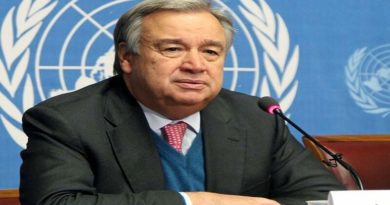New body ready to help unleash potential of carbon markets
A key supervisory body established under the Paris Agreement is ready to kick off its work to help unleash the potential of carbon markets in the fight against climate change.
All nominations of the members of the Supervisory Body that oversees the mechanism established by Article 6, paragraph 4, of the Paris Agreement (the 6.4 Mechanism) have been communicated to the UNFCCC secretariat by 17 June 2022. A formal meeting will take place in the coming weeks to launch the operation of the Body.
The decision on Article 6 of the Paris Agreement was the final outstanding component of the Paris Agreement implementation rulebook to be adopted at COP26 at the UN Climate Change Conference Glasgow last November.
The Article 6 decision helps move the world closer towards the Paris Agreement goal of holding the global average temperature rise to as close as possible to 1.5 degrees Celsius.
This can happen through enabling cooperation among governments in the implementation of their national climate action plans (Nationally Determined Contributions, or “NDCs”) to allow for higher ambition in their mitigation and their adaptation actions and to promote sustainable development and environmental integrity.
“The negotiations that helped get Article 6 to this point were extremely difficult, but I believe a fine balance was struck. Their approval shows the collective commitment of the international community to multilateralism and collaboration. And it shows that multilateralism works and works for people around the world,” said UN Climate Change Executive Secretary Patricia Espinosa.
The Article 6.4 Mechanism is designed to incentivize the private sector to implement mitigation activities across the world in a range of sectors and technologies, such as energy efficiency and transport. These will allow for the development of carbon credits that can be transferred internationally and used in other countries to meet aims of NDCs, other international mitigation initiatives such as by the International Civil Aviation Organization, or in voluntary markets for social and cooperate responsibilities.
The UN’s top climate change official noted that whilst the rules are highly technical, the benefits are clear: “The rules provide the groundwork to help unlock resources on support for developing nations. This is important for developing and especially least developed countries and small island states. After all, many do not currently have the means or resources necessary to energize an economy-wide transition towards a low emissions future. It’s about leveling the playing field so that emissions can be traded with environmental integrity.”
Recent research reports published by the International Emission Trading Authority show that Article 6 has the potential to halve the cost of implementing national climate action plans. This would save an estimated USD 250 billion annually by 2030 alone.
The rules of Article 6.4 Mechanism adopted in Glasgow expand the role of the host countries. This includes more responsibilities, such as oversight, which comes with its own set of challenges. UN Climate Change has been tasked by the governments through the regional collaboration centres — the RCCs — to work with them and with Supervisory Body to roll out capacity-building support.
RCCs are to also assist countries on the ground with respect to broad climate action, including the support for the transition of clean development mechanism (CDM) activities to the Article 6.4 Mechanism if they are eligible for transition.
The immediate work of the Supervisory Body will be to operationalize the Article 6.4 Mechanism. This includes the development of a series of regulations, some of them for consideration by governments at the next UN Climate Change Conference, COP27 in Sharm el-Sheik.




